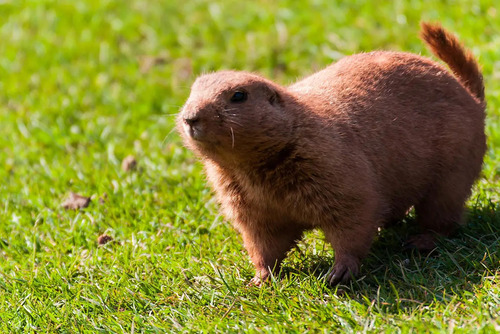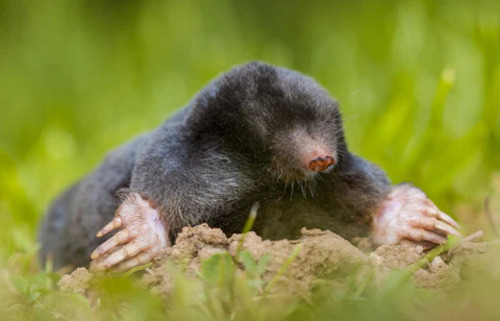Gophers are fascinating, burrowing rodents known for their underground lifestyles. Native to North and Central America, these creatures play an essential role in the ecosystem by aerating soil, but they are often considered pests by gardeners and farmers due to their digging habits. In this article, we’ll explore what gophers look like, their physical characteristics, and other important aspects to help you easily identify them.

Gophers, also known as pocket gophers, are small to medium-sized rodents that are typically between 5 and 14 inches long, depending on the species. They belong to the family Geomyidae and are named for their fur-lined cheek pouches or "pockets," which they use to carry food and nesting materials.
Here are some key features that define what a gopher looks like:
Gophers have thick fur, which can vary in color from brown to black, and sometimes grayish or sandy. Their fur is designed to blend into their surroundings, providing excellent camouflage against predators. Their coats are soft and dense, which protects them from soil and keeps them warm while burrowing.
One of the most distinctive features of a gopher is its teeth. Gophers have large, sharp incisors that are visible even when their mouths are closed. These teeth protrude from their mouths and are used to dig through tough soil, roots, and plants. Unlike other rodents, gophers’ lips close behind their teeth, allowing them to use their incisors without getting dirt in their mouths.
Gophers have a stocky body that is built for digging. They are equipped with strong forelimbs and long, sharp claws designed for excavating soil. Their hind limbs are much smaller but still powerful enough to help them push dirt behind them as they dig. Gophers have a cylindrical body that allows them to move easily through tunnels.
Gophers have small eyes and ears, reflecting their subterranean lifestyle. Their vision is not particularly strong since they spend most of their time underground in the dark. However, their other senses, like touch and smell, are highly developed to help them navigate their surroundings and locate food.
A gopher’s tail is relatively short, usually about the length of its hind legs. Interestingly, the tail is hairless or sparsely furred and is sensitive to touch. Gophers use their tails as sensory tools to feel their way through dark tunnels while moving in reverse.
Now that you know what a gopher looks like, it’s important to understand how their physical characteristics tie into their behavior.
Gophers are expert diggers. They can dig extensive networks of tunnels and chambers using their strong forelimbs, sharp claws, and large incisors. A gopher’s body is built for tunneling, with its cylindrical shape allowing it to navigate tight spaces underground. Their burrowing habits help them search for food, create nests, and escape predators.
The fur-lined cheek pouches, or "pockets," are a unique feature that sets gophers apart from other rodents. These pockets stretch back to their shoulders and are used to store food like roots, tubers, and plant stems. Gophers can carry large amounts of food back to their underground nests without needing to make multiple trips.
Due to their small size, gophers are vulnerable to predators such as owls, snakes, foxes, and even domestic cats. To defend themselves, gophers rely on their burrowing skills. When threatened, they can quickly disappear into their tunnels. Their camouflaged fur also helps them blend in with the earth around their burrows.
If you're wondering whether you have gophers in your garden or yard, there are several signs to look out for:
Mounds of Dirt: Gophers leave behind fan-shaped mounds of dirt at the entrances to their tunnels. These mounds are a telltale sign of their presence.
Chewed Plants: Gophers are herbivores, and they often feed on plant roots, stems, and leaves. If you notice plants that have been chewed or damaged near the ground, gophers might be the culprits.
Tunnels: Gophers create a complex system of tunnels that can span several hundred square feet. The tunnels are usually located just beneath the surface of the soil.
Gophers are often confused with other burrowing animals like moles, voles, and groundhogs. Here’s how you can tell the difference:
Gophers vs. Moles: Moles are insectivores, while gophers are herbivores. Moles have large, paddle-shaped front paws that are designed for digging, whereas gophers use their teeth and claws.

Gophers vs. Voles: Voles are much smaller than gophers and have shorter snouts and smaller front teeth. Voles also live in grassy areas and are not as effective at burrowing.
Gophers vs. Groundhogs: Groundhogs are much larger than gophers, often growing up to 30 inches long. Groundhogs are also less secretive and spend more time above ground.
In summary, gophers are small, burrowing rodents with distinct physical traits that make them well-adapted to their underground lifestyle. Their large incisors, strong forelimbs, and cheek pouches set them apart from other animals. While they may be pests to some, gophers play a vital role in soil health and ecosystem balance. Now that you know what a gopher looks like, you’ll be better equipped to identify and understand these fascinating creatures.
By understanding the appearance and behavior of gophers, you can take appropriate steps to manage their presence in your garden or appreciate their role in nature.
animal tags: Gophers
We created this article in conjunction with AI technology, then made sure it was fact-checked and edited by a Animals Top editor.